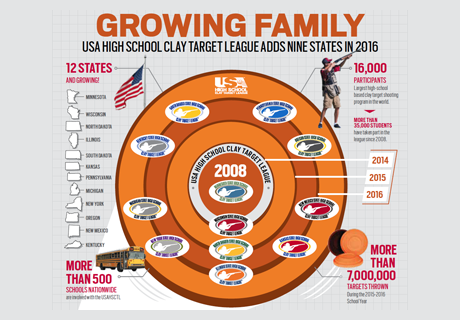
The Olympics will be soon underway in Tokyo, and along with Vince Hancock there will be a number of top American clay target athletes representing our nation in the trap and skeet competitions this July.
Despite sharing the name, Olympic Skeet and Olympic Trap are different than the original versions developed in America. Many athletes are not aware of these differences, so here’s a basic primer on the differences in how the rest of the world participates in these sports.
OLYMPIC TRAP
In Olympic Trap (also known as International Trap, or Bunker Trap), the athlete has five stations from which to shoot their targets. However, unlike American Trap, the bunker holds 15 trap machines (three per station) and each trap throws a target at a fixed angle. The targets are shaped slightly differently, and they fly over 20 mph faster than American trap targets.
While shooting, Olympic athletes don’t know exactly which of the three traps at a station will be triggered. However, they do get a second shot at each target.

OLYMPIC SKEET
Like Olympic Trap, the targets are thrown much faster compared to its American counterpart. However unlike American Skeet, athletes are required to keep their shotguns below their shoulder until they call for a target. When watching the competition look for the yellow bar on participants’ vests—that marks where they are required to keep their
stock before each shot. Another major difference is that there can be a delay of up to three seconds before the targets are released. The combination of focus, agility, and reaction time required to hit Olympic Skeet targets make some athletes consider it the most difficult of Olympic shooting sports.
TRY IT YOURSELF!
Olympic Skeet and Olympic Trap fields are not as common in America, but if you have a chance to try these exciting sports, give it a shot. But remember, even the best don’t shoot perfect scores, so just have fun and try something new!



